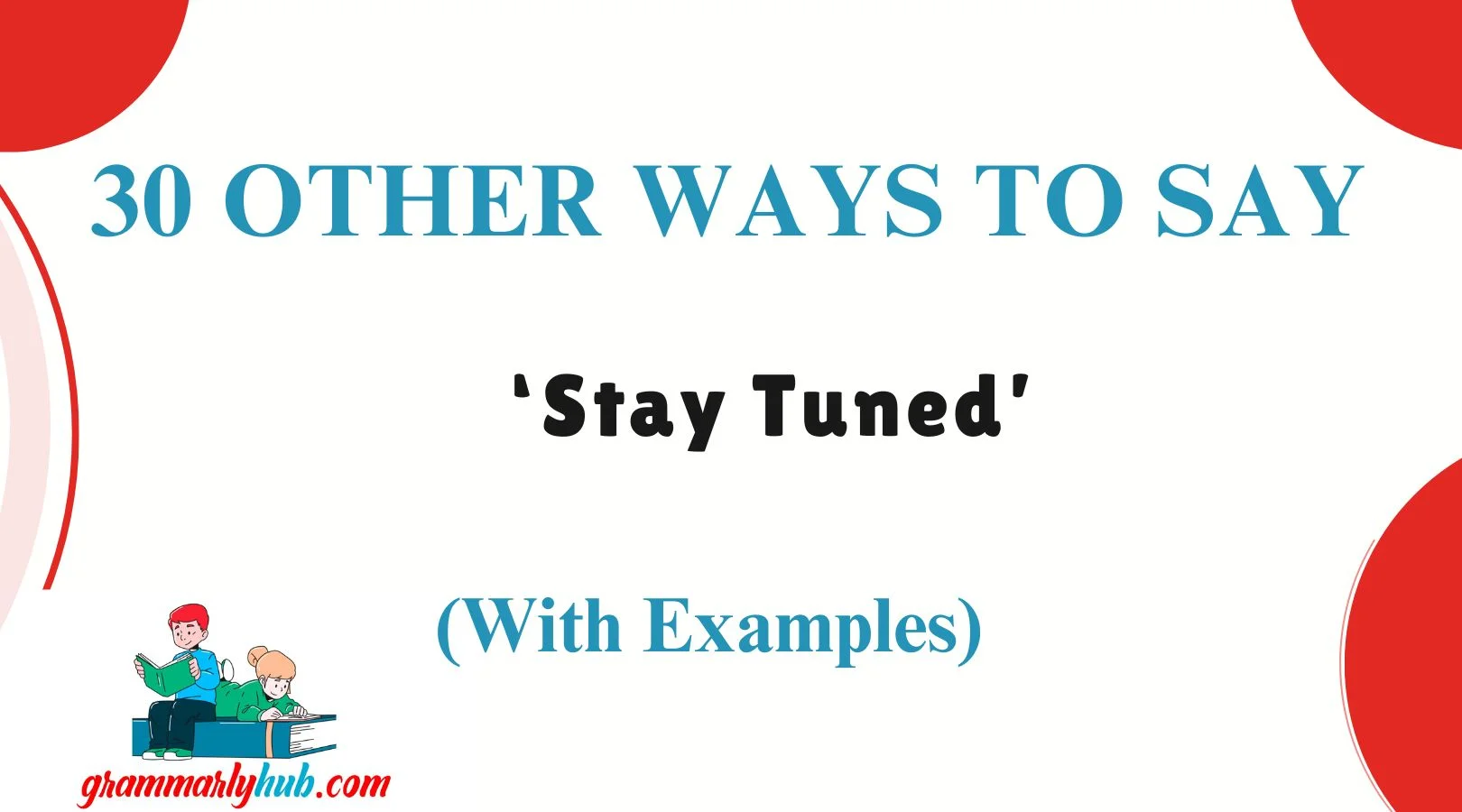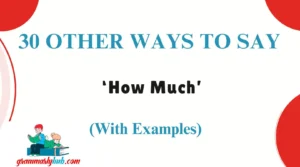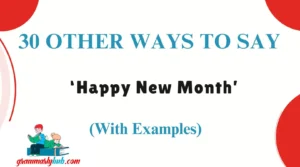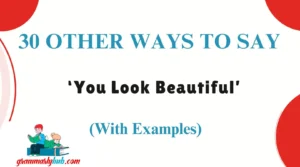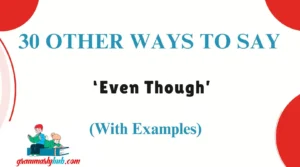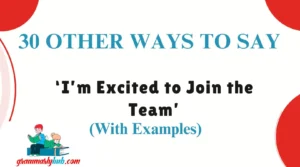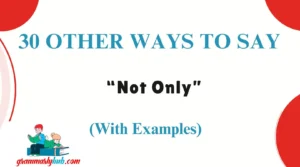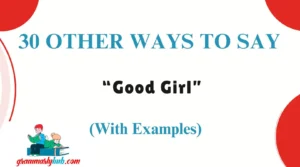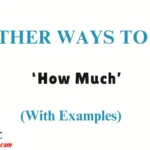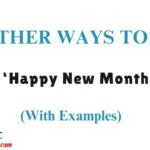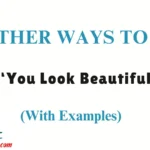Finding the right words to express anticipation, excitement, or gentle reminders can make a big difference in how your message is received. Saying “Stay tuned” is common, but sometimes you want something a little warmer, more engaging, or uniquely thoughtful.
Whether you’re writing a newsletter, closing a meeting, teasing upcoming content, or just keeping someone excited, these alternatives to “stay tuned” will help you sound more personal and connected. In this article, we’ll explore 30 heartfelt and creative ways to say it—along with examples, tone analysis, and tips to use them right.
What Does “Stay Tuned” Mean?
“Stay tuned” is an informal phrase used to tell someone to keep watching, listening, or paying attention for more information coming soon. It suggests that something exciting, important, or interesting is on its way.
When to Use “Stay Tuned”
Use “stay tuned” when:
- You’re hinting at future content or events.
- You want your audience to remain engaged or subscribed.
- You’re building anticipation or creating suspense.
- You’re ending a message but implying more will follow.
Is It Professional/Polite to Say “Stay Tuned”?
Yes, “stay tuned” is generally polite and acceptable in casual-professional contexts like emails, marketing, webinars, and announcements. However, in formal business writing or academic settings, a more refined alternative might be preferred.
Pros or Cons of Saying “Stay Tuned”
Pros:
- Short and catchy
- Builds curiosity
- Easy to remember
Cons:
- Can feel overused or vague
- May sound informal depending on tone
- Not always clear when the next update will happen
Synonyms For “Stay Tuned”
- More to Come
- Keep an Eye Out
- Watch This Space
- Hang Tight
- Don’t Miss What’s Next
- Coming Soon
- Catch You Soon
- Keep Watching
- Look Out for Updates
- Be Ready
- Next Up
- Stay Connected
- Keep Following
- Keep Checking In
- Be on the Lookout
- Something’s Brewing
- Stay in the Loop
- There’s More Ahead
- Keep Listening
- News on the Way
- We’re Just Getting Started
- Circle Back Soon
- We’ll Be Back Shortly
- Keep Your Eyes Peeled
- Await Further Instructions
- We’ll Keep You Posted
- Don’t Go Anywhere
- Stay With Us
- Stick Around
- Updates Coming Your Way
1. More to Come
Definition: A phrase suggesting there’s additional content or information arriving soon.
Explanation: This phrase is encouraging and builds gentle anticipation. It’s perfect for newsletters, presentations, or teaser posts.
Example Scenario: “Thanks for reading our launch post—more to come in next week’s update!”
Tone: Warm, curious, positive.
Worst Use: When there’s no plan or clarity about what’s coming—it can feel misleading.
2. Keep an Eye Out
Definition: Encourages the listener to be alert for future news.
Explanation: Slightly more active than “stay tuned,” it implies something is coming and the person should be ready.
Example Scenario: “Keep an eye out for our next feature drop—it’s something you won’t want to miss!”
Tone: Alert, friendly, engaging.
Worst Use: If the timing is too far off, it can feel vague or cause impatience.
3. Watch This Space
Definition: A phrase used to tell someone that updates will appear in a particular place.
Explanation: Often used on websites or social platforms to build curiosity about upcoming news or events.
Example Scenario: “We’ve got big plans—watch this space for exciting changes!”
Tone: Mysterious, upbeat, promotional.
Worst Use: When the platform isn’t actually updated—audiences may lose trust.
4. Hang Tight
Definition: A casual way to ask someone to wait patiently.
Explanation: Conveys care and a sense of reassurance, especially in conversational writing.
Example Scenario: “We’re just fixing a few things—hang tight while we prepare the next update.”
Tone: Friendly, laid-back, personal.
Worst Use: In formal communication—it might sound too casual or dismissive.
5. Don’t Miss What’s Next
Definition: Encourages attention to what’s coming soon.
Explanation: More urgent and directive than “stay tuned,” this version works well in marketing or promotional content.
Example Scenario: “Don’t miss what’s next—our biggest reveal of the year is almost here!”
Tone: Exciting, promotional, upbeat.
Worst Use: When overused, it can feel like clickbait or salesy.
6. Coming Soon
Definition: Used to signal that something will arrive or be revealed shortly.
Explanation: This phrase is simple and effective for teasers, event promotions, or product launches. It carries a friendly, anticipatory tone.
Example Scenario: “Our new website design is coming soon—we can’t wait to share it with you!”
Tone: Excited, optimistic, promotional.
Worst Use: If the “soon” turns into months with no update, it may frustrate your audience.
7. Catch You Soon
Definition: A casual way to say “see you later,” often implying that there’s more to come.
Explanation: This phrase creates a friendly, conversational vibe, ideal for closing casual messages or online content.
Example Scenario: “That’s all for today’s video—catch you soon for part two!”
Tone: Friendly, relaxed, approachable.
Worst Use: In highly professional or formal settings—it can come across as too informal.
8. Keep Watching
Definition: A direct way of encouraging continued attention or viewership.
Explanation: Common in video or live stream content, it invites the audience to stay engaged because there’s more to see.
Example Scenario: “There’s more coming in this episode—keep watching for the bonus tips!”
Tone: Direct, energetic, informal.
Worst Use: In text-based or professional emails—it may sound pushy or out of context.
9. Look Out for Updates
Definition: Tells your audience to be alert for new information or news.
Explanation: It sounds a bit more proactive and professional, suitable for email campaigns or app notifications.
Example Scenario: “We’re rolling out features gradually, so look out for updates in your dashboard.”
Tone: Informative, business-casual.
Worst Use: When updates are infrequent or unpredictable—could reduce trust if nothing arrives.
10. Be Ready
Definition: Encourages someone to prepare for something upcoming.
Explanation: Slightly more motivational than “stay tuned,” this phrase works well for launches or challenges.
Example Scenario: “Something amazing is dropping this weekend—be ready!”
Tone: Energetic, empowering, bold.
Worst Use: If what follows isn’t worth the hype, the phrase might feel exaggerated or gimmicky.
11. Next Up
Definition: Announces the next item, event, or piece of content in a sequence.
Explanation: Perfect for presentations, webinars, or series, this phrase is neat and to the point.
Example Scenario: “Next up—we’ll walk through the design process in detail.”
Tone: Clear, neutral, professional.
Worst Use: When there’s no actual structure or agenda—audience might get confused.
12. Stay Connected
Definition: Encourages ongoing engagement and communication.
Explanation: Often used in email signatures, websites, or brand messaging, it emphasizes community and ongoing relationship.
Example Scenario: “Want more updates and tips? Stay connected through our newsletter!”
Tone: Warm, inclusive, professional.
Worst Use: When there’s no real method of connection—it feels empty or generic.
13. Keep Following
Definition: Encourages continuous attention, typically on social platforms or blogs.
Explanation: Ideal for social media content, it’s more about long-term engagement than immediate updates.
Example Scenario: “We’ve got a lot of exciting stories coming your way—keep following for more!”
Tone: Inviting, friendly, digital-savvy.
Worst Use: When content is infrequent or inconsistent—audience may lose interest.
14. Keep Checking In
Definition: Suggests regular engagement or visits for new content or information.
Explanation: Gentle and kind, this phrase is good for blogs, service pages, or community spaces.
Example Scenario: “Keep checking in—we’re always adding new guides and resources.”
Tone: Supportive, casual, kind.
Worst Use: In time-sensitive content where more direct phrasing is needed.
15. Be on the Lookout
Definition: Encourages someone to be watchful for something specific.
Explanation: Slightly more formal than “hang tight,” it has an alert, proactive feel.
Example Scenario: “We’ve got a surprise collaboration coming—be on the lookout!”
Tone: Curious, alert, playful.
Worst Use: When overused—it may lose its sense of urgency and novelty.
16. Something’s Brewing
Definition: Implies that something exciting or creative is developing.
Explanation: Quirky and imaginative, this phrase adds intrigue and suspense—especially good for creative brands.
Example Scenario: “We can’t say much yet, but something’s brewing behind the scenes!”
Tone: Mysterious, fun, whimsical.
Worst Use: In formal business writing—it may seem too playful or vague.
17. Stay in the Loop
Definition: Encourages someone to remain informed and included in updates.
Explanation: This is inclusive and professional, ideal for email sign-ups or internal updates.
Example Scenario: “Want project alerts? Subscribe to stay in the loop.”
Tone: Professional, clear, welcoming.
Worst Use: When communication is inconsistent—it can feel hollow or misleading.
18. There’s More Ahead
Definition: Suggests that future content or experiences are on their way.
Explanation: Great for inspiring or narrative content, this phrase signals continuity and growth.
Example Scenario: “That’s the beginning of our story—there’s more ahead, so don’t miss it.”
Tone: Inspirational, forward-looking.
Worst Use: When your content is ending or not continuing—it creates false expectations.
19. Keep Listening
Definition: Encourages continued attention to audio-based content.
Explanation: Tailored for podcasts, webinars, or voice content, this phrase feels natural and listener-focused.
Example Scenario: “We’ll be back after a short break—keep listening for the second segment.”
Tone: Friendly, smooth, audio-centric.
Worst Use: In visual or text mediums—it might confuse the context.
20. News on the Way
Definition: Announces that new information will be shared soon.
Explanation: Reassuring and informative, this phrase is well-suited for professional updates or announcements.
Example Scenario: “We know you’ve been waiting—news on the way in our next email.”
Tone: Calm, reassuring, professional.
Worst Use: When you’re unsure of the update schedule—it may sound like a delay tactic.
21. We’re Just Getting Started
Definition: Suggests that what has happened so far is only the beginning.
Explanation: This is a motivational and engaging phrase, ideal when you want to excite your audience about more to come.
Example Scenario: “That was the intro to our new journey—we’re just getting started, so keep watching!”
Tone: Energetic, hopeful, confident.
Worst Use: When you’re wrapping up—this phrase can feel misleading or confusing if nothing follows.
22. Circle Back Soon
Definition: Implies that someone should return shortly for updates or further info.
Explanation: This one has a professional yet conversational tone, and works well in meetings, content releases, or blogs.
Example Scenario: “We’re finalizing details—circle back soon for the full breakdown.”
Tone: Polite, proactive, semi-formal.
Worst Use: In urgent messages—it may sound too relaxed or passive.
23. We’ll Be Back Shortly
Definition: A clear message that a temporary break is happening and content will return soon.
Explanation: Often used in live events, broadcasts, or digital experiences, this phrase manages expectations while keeping the audience.
Example Scenario: “Taking a short break—we’ll be back shortly with more insights.”
Tone: Calm, courteous, professional.
Worst Use: When the return time is unknown—it may come off as vague or untrue.
24. Keep Your Eyes Peeled
Definition: A playful way of saying “stay alert.”
Explanation: This idiom is great for casual content, especially if you want to inject a sense of fun or mystery.
Example Scenario: “Keep your eyes peeled—the winner announcement is just around the corner!”
Tone: Playful, curious, informal.
Worst Use: In formal or sensitive messaging—it can feel too jokey or flippant.
25. Await Further Instructions
Definition: Suggests someone should wait for the next steps or details.
Explanation: This phrase is best suited for instructional or logistical communication, especially in structured or organized environments.
Example Scenario: “We’ve received your submission—await further instructions in your inbox.”
Tone: Formal, direct, informative.
Worst Use: In warm or creative content—it can feel robotic or impersonal.
26. We’ll Keep You Posted
Definition: A promise to provide updates when they’re available.
Explanation: Friendly and widely used, it offers reassurance and clarity. Great for customer service or announcements.
Example Scenario: “The schedule may shift slightly—we’ll keep you posted as soon as we confirm.”
Tone: Honest, relaxed, customer-friendly.
Worst Use: When there’s no follow-up—it can feel like empty reassurance.
27. Don’t Go Anywhere
Definition: A light, encouraging phrase telling someone to stay close or stay engaged.
Explanation: Often used in live media or casual writing, it works best when you’re transitioning between segments.
Example Scenario: “Don’t go anywhere—we’re about to reveal something exciting!”
Tone: Fun, friendly, informal.
Worst Use: In serious business writing—it can feel overly casual or unprofessional.
28. Stay With Us
Definition: Asks the reader or listener to continue being present or engaged.
Explanation: This has a welcoming, community-driven feel and is perfect for warm content or human-centered brands.
Example Scenario: “Stay with us—we’re building something meaningful together.”
Tone: Empathetic, inclusive, thoughtful.
Worst Use: When the tone of the message is cold or transactional—it may sound insincere.
29. Stick Around
Definition: A friendly phrase encouraging someone not to leave or log off just yet.
Explanation: It’s casual and inviting, often used in content transitions, especially for video, livestreams, or email sequences.
Example Scenario: “We’ve got a bonus tip coming—stick around till the end!”
Tone: Easygoing, engaging, informal.
Worst Use: When the context is too formal or corporate—it may seem unprofessional.
30. Updates Coming Your Way
Definition: Promises that new information or content is on its way soon.
Explanation: Clear and forward-focused, this phrase is excellent for newsletters, product launches, and service updates.
Example Scenario: “Thanks for your patience—updates coming your way in the next 24 hours.”
Tone: Direct, helpful, forward-looking.
Worst Use: When no real updates are planned—it risks damaging credibility.
Conclusion
“Stay Tuned” is a great go-to phrase, but language is powerful, and switching things up can bring fresh energy, tone, and connection to your message. Each of these 30 alternatives provides a way to express anticipation, care, and engagement in your own voice—whether you’re speaking to a friend, customer, or audience.
From casual to professional, playful to polished, these phrases help you match your tone to the moment—and ensure your communication feels genuine, warm, and clear. So next time you’re ready to say “stay tuned,” try one of these alternatives instead—and let your words carry just a little more personality.
FAQs: Other Ways to Say ‘Stay Tuned’
Q1: What does “Stay Tuned” really mean?
A: “Stay Tuned” is a phrase used to ask someone to remain engaged or alert for upcoming updates, information, or content. It originally comes from radio and TV, where viewers were asked to “stay tuned” for the next broadcast segment.
Q2: Is “Stay Tuned” professional to use in emails or business communication?
A: Yes—but it depends on your tone and context. “Stay Tuned” is polite and friendly, but in formal or corporate settings, alternatives like “We’ll Keep You Posted” or “Look Out for Updates” may sound more professional.
Q3: What are the most casual alternatives to “Stay Tuned”?
A: Some light, informal options include:
- “Stick Around”
- “Catch You Soon”
- “Don’t Go Anywhere” These are perfect for videos, podcasts, or friendly content.
Q4: What are the most professional alternatives to “Stay Tuned”?
A: Consider these for business or formal communication:
- “We’ll Keep You Posted”
- “Look Out for Updates”
- “Updates Coming Your Way” These phrases maintain clarity while keeping your tone polished.
Q5: Can I use “Stay Tuned” in social media posts?
A: Absolutely! Social platforms are ideal for this phrase. You can also try fun versions like “Something’s Brewing” or “Be on the Lookout” to build curiosity and engagement.

Emma Brooke is the voice behind Grammarly Hub, where grammar meets clarity. With a deep passion for the written word, Emma helps readers navigate the tricky waters of English grammar, writing tips, and effective communication.
